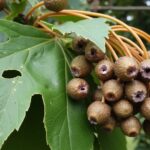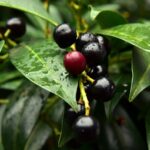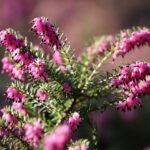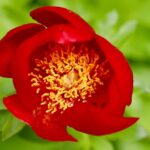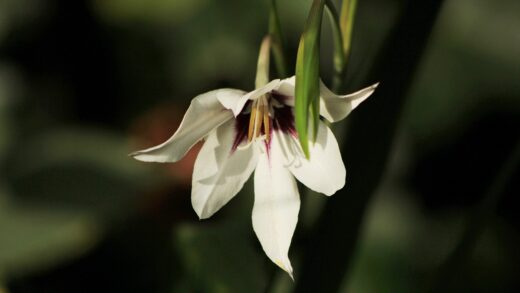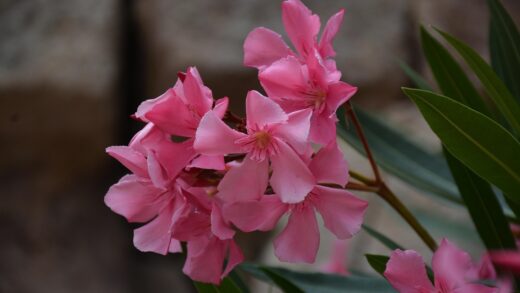Pruning is a fundamental horticultural practice that is essential for maintaining the health, productivity, and aesthetic form of a quince tree. It is a deliberate and thoughtful process of selectively removing branches and shoots to achieve specific goals, such as establishing a strong and balanced structure, improving fruit quality, and managing the overall size of the tree. While the idea of cutting parts off a tree may seem counterintuitive, proper pruning is one of the most beneficial things a grower can do to ensure the long-term vigor and fruitfulness of their quince. An unpruned tree will often become a dense, tangled thicket of unproductive wood that is more susceptible to diseases and yields small, inferior-quality fruit.
The primary objective of pruning a young quince tree is to develop a strong, well-spaced framework of scaffold branches. This initial training sets the foundation for the tree’s future shape and its ability to support the weight of a heavy fruit crop without breaking. For older, mature trees, the focus of pruning shifts towards maintenance. This involves thinning out the canopy to improve sunlight penetration and air circulation, which are crucial for fruit ripening and disease prevention, and encouraging the continuous renewal of the young wood on which quince produce their fruit.
Understanding the fruiting habit of the quince tree is paramount to pruning it correctly. Quince produce their flowers, and subsequently their fruit, on the tips of new shoots that grow in the spring from buds on the previous season’s wood. This means that excessively harsh pruning can remove too much of this one-year-old wood, drastically reducing the potential harvest for that year. The goal is to strike a balance: removing enough older, less productive wood to stimulate new growth while retaining enough fruiting wood to ensure a good crop.
Beyond its effects on fruit production, pruning is also a critical tool for maintaining the health of the tree. The removal of any dead, damaged, or diseased branches is a top priority during any pruning session. This sanitation pruning eliminates potential entry points for pathogens and removes sources of infection from the tree. Creating an open canopy with good airflow helps the foliage to dry quickly after rain or dew, creating a less hospitable environment for the development of common fungal diseases like leaf blight.
The goals of pruning
One of the most important long-term goals of pruning is to establish a robust and durable structure for the quince tree. This is especially critical during the first few years after planting. The aim is to select three to five main “scaffold” branches that are well-spaced both vertically and radially around the trunk, forming a strong, open-centered or “vase” shape. This structure provides excellent light exposure to all parts of the tree and is strong enough to bear the weight of heavy fruit loads in the future without the risk of major branch failure.
A second major objective of pruning is to maintain the tree’s vigor and stimulate the production of new fruiting wood. Quince trees bear fruit on new growth, so it is essential to encourage the tree to produce a healthy amount of new shoots each year. This is achieved by selectively thinning out older, less productive branches and heading back some of the remaining branches. This process redirects the tree’s energy into producing strong new shoots from the remaining buds, ensuring a continuous cycle of renewal and a consistent supply of wood that will bear fruit.
Improving fruit quality is another key reason for pruning. By thinning out the canopy, more sunlight can penetrate the interior of the tree, reaching the developing fruit. This increased light exposure is essential for the fruit to develop good size, a rich golden color, and a high sugar content. Pruning also involves thinning out the number of potential fruiting sites, which can lead to the tree producing fewer, but significantly larger and higher-quality, fruits, as its resources are concentrated into a smaller crop load.
Finally, pruning is a vital tool for disease and pest management. Removing any wood that is dead, diseased, or damaged eliminates reservoirs of pathogens and overwintering pests. Thinning the canopy to improve air circulation is perhaps one of the most effective preventative measures against fungal diseases, as it allows the leaves to dry more rapidly. Pruning also makes it easier to get good spray coverage if fungicides or insecticides are needed, and it allows for easier inspection of the tree to spot any potential problems early.
When to prune quince trees
The optimal time to perform the main structural and maintenance pruning on quince trees is during their dormant season. This period, which runs from late autumn after the leaves have dropped until late winter or very early spring before the buds begin to swell, is ideal for several reasons. Firstly, the absence of leaves allows for a clear and unobstructed view of the entire branch structure, making it much easier to identify problems and make well-informed pruning decisions.
Pruning during dormancy is also less stressful for the tree. During this resting phase, the tree’s metabolic activity is at a minimum, and it is not actively trying to grow or produce fruit. Making pruning cuts at this time allows the tree to seal the wounds efficiently as soon as growth resumes in the spring. Furthermore, the risk of transmitting certain diseases, particularly bacterial infections like fire blight which are more active in warmer, wetter weather, is significantly lower during the cold, dry conditions of winter.
While the main pruning is done in winter, some light pruning can and should be done during the growing season. This summer pruning typically focuses on removing any vigorous, upright, and non-fruiting shoots known as water sprouts that often arise from the main branches. These shoots grow rapidly and can shade the developing fruit, competing with it for water and nutrients. Removing them during the summer directs the tree’s energy back into the fruit and helps to maintain the open canopy structure. Any suckers that emerge from the base of the trunk or the rootstock should also be removed as soon as they are noticed, at any time of year.
It is important to avoid heavy pruning late in the season, such as in late summer or early autumn. Making large cuts at this time can stimulate a late flush of new growth that will not have a chance to harden off properly before the first frosts. This tender new growth is highly susceptible to winter injury, which can damage the tree. The focus in late summer should be on fruit ripening, not on stimulating new vegetative growth.
Pruning techniques for young trees
The pruning strategy for a young quince tree in its first few years is known as “training,” and its purpose is to build the tree’s permanent framework. For a bare-root tree planted in winter, the first cut is often made immediately after planting. The main leader is typically “headed back,” or cut, to a height of about 75-90 centimeters from the ground. This initial cut encourages the growth of side branches below the cut, from which the primary scaffold limbs will be selected.
At the beginning of the second dormant season, the grower must select the best of these new side branches to become the permanent scaffold limbs. The goal is to choose three to five branches that are well-spaced around the trunk, avoiding any that are directly opposite each other. These selected branches should have wide, strong angles of attachment to the trunk, ideally between 45 and 60 degrees. Any other branches, especially those that are growing too low on the trunk or have weak, narrow crotches, should be removed completely. The selected scaffold branches are then typically headed back by about one-third of their length to encourage further branching.
In the third and fourth years, the focus is on developing the secondary branch structure that arises from the main scaffold limbs. The goal is to continue to fill out the tree’s shape while maintaining an open center that allows for good light penetration. This involves selecting well-placed lateral branches growing from the main scaffolds and removing any that are growing inwards towards the center of the tree, crossing over other branches, or growing vertically upwards or downwards. A continued light heading of the main scaffold and secondary branch tips will encourage a denser, more compact, and more fruitful tree.
Throughout this establishment phase, the key is to be patient and to avoid removing too much growth in any single year. The goal is to guide the tree’s growth rather than to fight against it. Each cut should be made with a clear purpose in mind: to contribute to the development of a strong, open, and well-balanced structure that will serve the tree well for its entire productive life. By the end of the third or fourth year, the main framework should be well established, and the pruning strategy will begin to shift towards the maintenance techniques used for mature trees.
Pruning mature trees
Once a quince tree has established its main framework, the annual pruning shifts from training to maintenance. The primary goal becomes to maintain the tree’s size and shape, and to ensure it remains productive by encouraging a steady supply of new fruiting wood. This is achieved through a combination of thinning cuts and heading cuts performed during the dormant season each year. A good rule of thumb is to aim to remove about 10-20% of the older wood annually to stimulate renewal.
The first step in pruning a mature tree is always sanitation: a thorough inspection and removal of any wood that is dead, damaged by winter storms, or shows any signs of disease such as cankers from fire blight. These cuts should be made back to healthy wood, ensuring that no diseased tissue is left on the tree. This not only improves the health of the tree but also its appearance and safety, as dead branches can break and fall at any time.
Next, the focus shifts to thinning the canopy. This involves making “thinning cuts,” where an entire branch is removed back to its point of origin on a larger limb or back to the trunk. The goal is to eliminate branches that are crossing or rubbing against each other, those that are growing back towards the center of the tree, and to thin out areas where the branches have become too dense and crowded. This process opens up the canopy, dramatically improving sunlight penetration to the developing fruit and increasing air circulation to reduce disease pressure.
Finally, some “heading cuts” may be used to manage the overall size of the tree and to encourage branching. A heading cut involves shortening a branch rather than removing it entirely. Heading back some of the longer, whip-like shoots from the previous season can help to stiffen the branches and encourage the development of the short lateral shoots and spurs where the fruit is borne. However, excessive heading should be avoided on a mature tree, as it can create a dense thicket of vegetative growth at the expense of fruit production.

